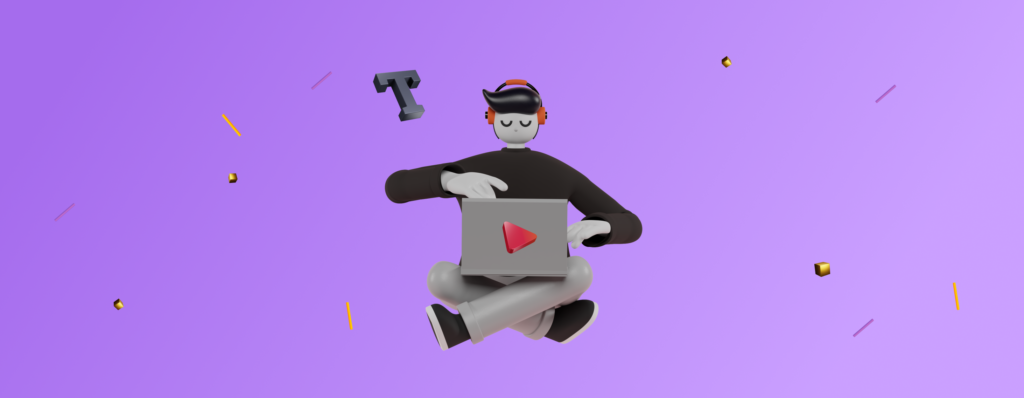People perceive and process information differently. According to the VARK model, all students can be divided into 4 categories: kinesthetic, auditory, visual, and those who can easily remember the text after reading or taking notes. However, there are several important caveats regarding the VARK model:
- Each person is prone to a unique learning style;
- Visuals are the vast majority of students of all ages;
- Even representatives of the auditory or kinesthetic type of information perception remember the data presented in video format just as well.
If you want to explain the most difficult concepts, you should use videos or meetings in the classroom, where there is direct contact between the teacher and students. The inclusion of multimedia elements in the educational process greatly simplifies explanation and perception, even in the classroom.
Why is visual information the most effective?
Visuals are those students for whom vision and observation are the key ways of learning about the world. They need illustrations in the text, charts, graphs, or video explanations of how something works in practice. That is, the visuals look at a filmed experiment in chemistry, physics, or mechanics and remember how it works. Instead, they would have to re-read or hear explanations a thousand times, and still many things would remain unclear.
By adding text to video as subtitles, it is possible to make the video format convenient even for that category of students who better remember the information they read. Voice over the video — and you thereby meet the needs of students who are good at listening to new explanations.
So, you can combine all types of training in a single strategy. Explanatory videos help teachers and trainers make their activities interesting and effective.
How do visual elements improve the studying process?
A person thinks in categories and images. That is why the first letters looked like drawings: the alphabet appeared much later. Therefore, by appealing to visual images, the teacher draws the attention of students at a deep level. In 2009 American neuroscientists found that 75% of the information processed by the brain comes from visual sources. But if in 2009 there were not so many opportunities to work with visual formats, today every teacher can create an explanatory video in a matter of minutes. Text to video online service helps convert even the most boring lectures into bright, dynamic videos, that students will like.
Explainer videos can be not only a recording of a lecture, but also contain multimedia elements, such as excerpts from other videos, pictures, tables, diagrams, or flowcharts. Narration is effectively combined with the alternation of various images, and therefore the explanation in this form brings much more benefit than traditional teaching.
Apart from that, the teacher can send a training video or tutorial to students, and they will have the opportunity to watch it again. This approach has additional advantages:
- Students return to the video when it is convenient for them, and they are tuned in to watch;
- It is possible to view unclear moments several times;
- The students study the topic at their own pace: all at once, or divided into several stages.
- Visual information makes it easier to identify connections and patterns.
- A visual learning environment promotes the development of analytical thinking, logic, and memory.
It turned out that it is possible not only to explain new material using multimedia technologies but also to invite students to do the same. When working on creating their explanatory video, the students are forced to process and systematize a large amount of information. This develops their research skills and helps with memorization.
Teachers also have benefits: they create a video once and can use it many times. It is just as valuable an asset as ready-made lecture notes, but it has even more benefits. For example, a teacher can send an explanatory video to students, even if the lesson is canceled or postponed for some reason.
How to create a great explainer video?
The most important problem facing teachers is converting text material into video format. The Elai.io service provides a text-to-video learning opportunity. Convert any text to video in just a few simple steps. This will help make the educational material more interesting and relevant to students today. Using the Elai.io toolkit, you can create explainer videos in a few minutes, especially if you already have theses, presentations, or lectures that you want to illustrate.
Improving learning with text-to-video is extremely simple. You will be able to handle it even if you have not used automatic video converters before.
How to work with Elai.io?
- Register on the service to get the opportunity to create your first video for free.
- Select the format: horizontal or landscape.
- Find a video presentation template by browsing or searching by tag.
- Add your text to each slide. You can also immediately add other video fragments or images to your liking in your presentation.
- Elai.io has a large library of attractive male and female voices to voice the text. Or you can upload a sample of your voice, so your presentation will sound authentic to your students.
- Choose a narrator. You can use the service to convert text into video and work with ready-made avatars as well. The narrator performs the role of a lecturer and creates the effect of transmitting information from person to person. Scientists have found that it is more effective than a video with a voice-over.
Check the previous result to make sure, that everything turned out the way you wanted. If your presentation needs editing, you can go back to any slide to make it perfect. It remains to save the video and use it at every opportunity.
